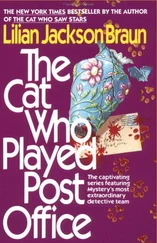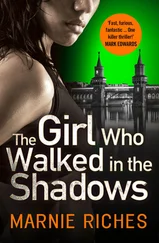“What newspaper did you say you were from?” Ekström said.
“Millennium magazine. I knew one of the victims. I understand that the police are looking for a specific person. Can you confirm this?”
“I can’t comment at present.”
“Can you say when you will be able to provide some concrete information?”
“We may well call another press conference later this evening.”
Ekström sounded evasive. Cortez tugged on the gold ring in his ear-lobe.
“Press conferences are for reporters who have immediate deadlines. I work for a monthly magazine, and we have a very special personal interest in knowing what progress is being made.”
“I can’t help you. You’ll have to be patient like everyone else.”
“According to my source it’s a woman who is wanted for questioning. Who is she?”
“I can’t comment just now.”
“Can you confirm that you’re searching for a woman?”
“I’m not going to confirm or deny anything at all. Goodbye.”
Holmberg stood in the doorway of the bedroom and contemplated the huge pool of blood on the floor where Mia Johansson had been found. He turned and could see a similar pool of blood where Svensson had lain. He pondered the extensive blood loss. It was a lot more blood than he was used to finding at shootings; Supervisor Mårtensson had been correct in his assessment that the killer had used hunting ammo. The blood had coagulated in a black and rusty-brown mass that covered so much of the floor that the ambulance personnel and technical team had to walk through it, leaving footprints throughout the apartment. Holmberg was wearing gym shoes with blue plastic booties over them.
The real crime scene investigation began, in his view, now. The bodies of the victims had been removed. Holmberg was there by himself after the two remaining techs had said goodnight and left. They had photographed the victims and measured blood splatter on the walls and conferred about “splatter distribution areas” and “droplet velocity.” Holmberg had not paid much attention to the technical examination. The crime scene techs’ findings would be compiled in a report which would reveal in detail where the killer had stood in relation to his victims, and at what distance, in which order the shots had been fired, and which fingerprints might be of interest. But for Holmberg it was of no interest at all. The technical examination would not contain a syllable about who the killer was or what motive he or she – a woman was now the prime suspect – might have had for the murders. Those were the questions he now had to try to answer.
Holmberg went into the bedroom. He put a worn briefcase on a chair and took out a Dictaphone, a digital camera, and a notebook.
He began by going through the chest of drawers behind the bedroom door. The top two drawers contained women’s underwear, sweaters, and a jewellery box. He arranged each object on the bed and scrutinized the jewellery box. He did not think it contained any pieces of great value. In the bottom drawer he found two photograph albums and two folders containing household accounts. He turned on his tape recorder.
“Confiscation protocol for Björneborgsvägen 8B. Bedroom, chest of drawers, bottom bureau drawer. Two bound photograph albums, size A4. One folder with black spine marked HOUSEHOLD and one folder with blue spine marked FINANCIAL DOCUMENTS containing information about a mortgage and loans for the apartment. A small box containing handwritten letters, postcards, and personal items.”
He carried the objects to the hall and placed them in a suitcase. He continued with the drawers in the bedside tables on each side of the double bed, finding nothing of interest. He opened the wardrobes and sorted through clothes, feeling in each pocket and in the shoes to check for any forgotten or hidden objects, and then turned his attention to the shelves at the top of the wardrobes. He opened boxes and small storage containers. Every so often he found papers or items that he would include for various reasons in the confiscation inventory.
There was a desk in one corner of the bedroom. It was a very small home office with a desktop Compaq computer and an old monitor. Under the desk was a two-drawer filing cabinet and on the floor next to the desk stood a low shelf unit. Holmberg knew that it would be in this home office that he would probably make the most important finds – to the extent that there was anything to find – and so he saved the desk for last. Instead he went into the living room and continued the crime scene inspection. He opened the glass-fronted cabinet and examined each bowl, each drawer, each shelf. Then he turned his attention to the large bookcase along the outer wall and the wall of the bathroom. He took a chair and began at the top, checking whether anything was hidden on top of the bookcase. Then he went down it shelf by shelf, quickly picking out stacks of books and going through them, also checking whether anything was concealed behind them on the shelves. After forty-five minutes he put the last book back on the shelf. On the living-room table was a neat stack of books. He turned on the tape recorder.
“From the bookcase in the living room. A book by Mikael Blomkvist, The Mafia’s Banker. A book in German entitled Der Staat und die Autonomen , a book in Swedish with the title Revolutionary Terrorism , and an English book Islamic Jihad.”
He included the book by Blomkvist because its author had turned up in the preliminary investigation. The last three works were perhaps less obvious. Holmberg had no idea whether the murders were related to any form of political activity – or indeed whether Svensson or Johansson was politically involved – or whether the books were merely indicative of a general interest in politics as part of their academic or journalistic work. On the other hand, if two dead bodies were found in an apartment where there were books about terrorism, he was going to make note of the fact. He placed the books in the suitcase with the other items.
Then he looked through the drawers in an antique desk. On top of the desk was a CD player, and the drawers contained a great number of CDs. Holmberg spent half an hour opening every CD case and verifying that the contents matched the cover. He found about ten CDs that had no label, and were probably burned at home or possibly pirated copies; he inserted the ones without labels into the CD player to check that they were not storing anything besides music. He examined the TV shelf nearest the bedroom door, where there was a large collection of video-cassettes. He test-played several of them. They seemed to be everything from action movies to a hodgepodge of taped news programmes and reports from Cold Facts, Insider , and Assignment Scrutiny. He added thirty-six videocassettes to the inventory. Then he went to the kitchen, opened a thermos of coffee, and took a short break before he went on with his search.
From a shelf in a kitchen cupboard he gathered a number of jars and medicine bottles. They too were placed in a plastic bag and added to the confiscated material. He picked out foodstuffs from the pantry and refrigerator and opened every jar, coffee package, and recorked bottle. In a pot sitting on the windowsill he found 1,220 kronor plus some receipts. From the bathroom he took nothing, but he did observe that the laundry basket was overflowing. He went through all the clothing. He took coats out of a closet in the hall and searched in every pocket.
He found Svensson’s wallet in the inner pocket of a sports jacket and added it to the inventory of confiscated items. Svensson had a membership card to the Friskis&Svettis gym chain, a Handelsbanken ATM card, and just under 400 kronor in cash. He found Johansson’s handbag and spent a few minutes going through its contents. She also had a card to Friskis&Svettis, an ATM card, a Konsum co-op loyalty card, and a membership card to something called Club Horizon, which had a globe as its logo. He found about 2,500 kronor in cash, a relatively large but not unreasonable sum, given that they were on their way out of Stockholm for the holiday weekend. That there was money in their wallets did reduce the likelihood of their deaths being robbery-related.
Читать дальше












